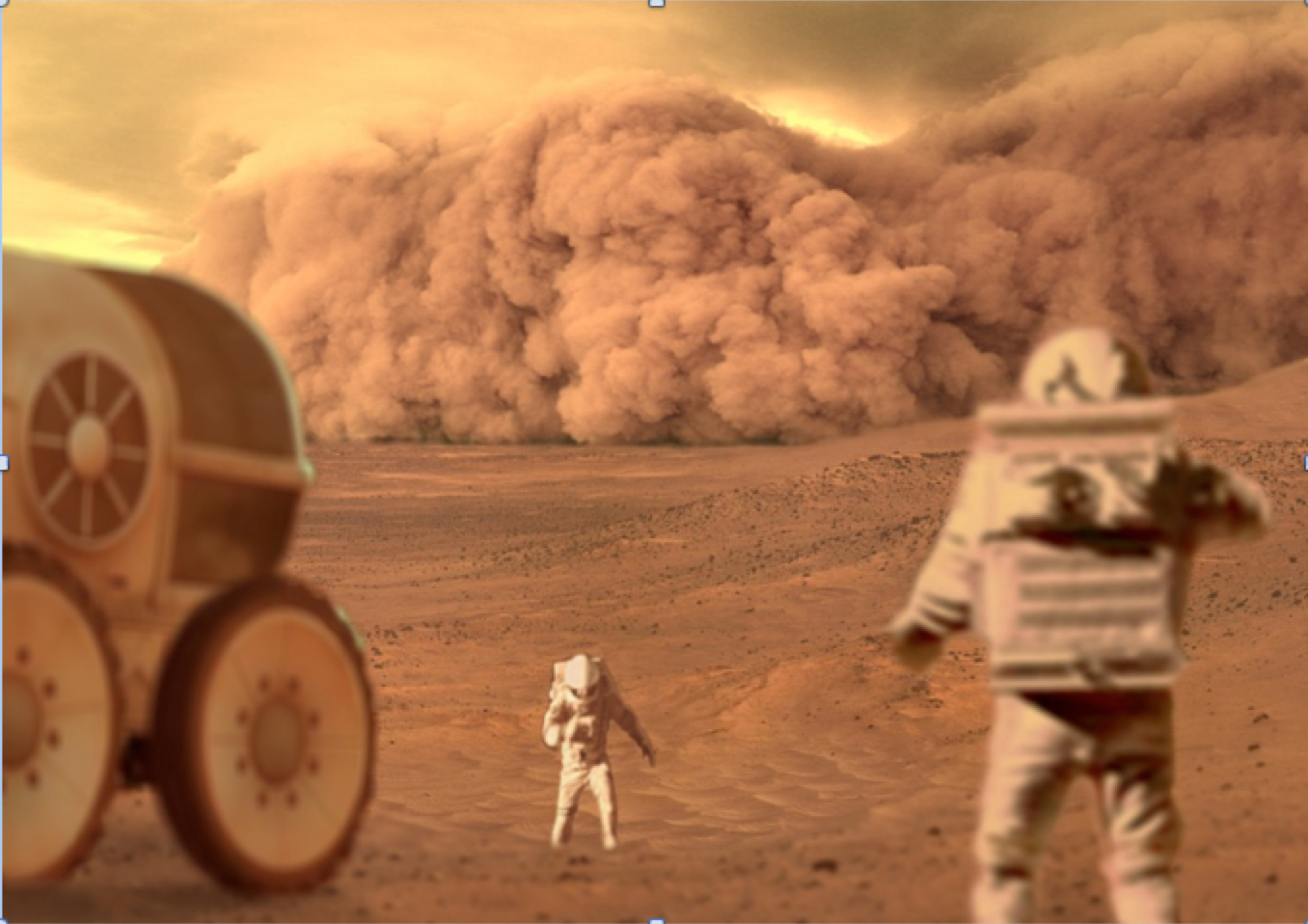Since Mars’ atmosphere is only one percent the density of Earth’s, storms on the Red Planet are far less intense. A storm that would wreak havoc on Earth would not have the force to knock Watney off his feet or to whip rocks and metal spikes through the air. Weir admits that this sandstorm is the plot’s greatest scientific inaccuracy. Given that wind force is a function of velocity and atmospheric density, a 120 mile per hour Martian storm would only have a dynamic force of approximately 12 miles per hour — great for Martian kite-flying, but not much more than that.
Gravity, too, is an Achilles heel of the film’s scientific accuracy. In The Martian, astronauts appear to exert themselves while walking in their spacesuits, which in line with the filmmakers’ aesthetic were built to the minimum girth at which they could support life. Since Martian gravity is only about one-third of Earth’s, astronauts would require spacesuits at least equal to their masses in order to experience their Earth weights on Mars. With less gravity to anchor them to the ground, their gaits would also be modified into long, bouncing strides. None of this comes across on screen with total accuracy.
The method of Watney’s rescue is also scientifically implausible. To intercept the ship coming to rescue him, he cuts a hole in his spacesuit so that the escaping pressure will propel him towards the waiting crew. In reality, this maneuver could not possibly have gone as shown. Instead, the vacuum of space would have pulled on Watney’s hand to plug the hole. Or, as is likely, the suit would have been so depressurized by the release of gas that Watney would have been deprived of oxygen. Left to face the harsh vacuum, he would have had only 10 seconds of consciousness and around a minute left to live.
But Watney does not die. During his time unshielded — plummeting through the thin Martian atmosphere and through space, largely unprotected under the virtually non-existent Martian geomagnetic field — Watney would have been exposed to dangerous levels of radiation. As a result, he and his fellow astronauts would be extremely susceptible to cancer. Nevertheless, he survives his rescue, and the story flashes years forward to a scene where he is teaching a future class of astronauts the hard-knock lessons that enabled his survival.
At the end of a film filled with so much strife, perhaps the plot is best left on such a positive note. “I wanted to write a story for people like me — people who know a fair amount about the realities of space travel and still want to enjoy a good story that doesn’t take too many liberties with reality,” Weir said. Mixing solid science with a healthy dose of fiction, it seems that Weir and The Martian have done just that.

